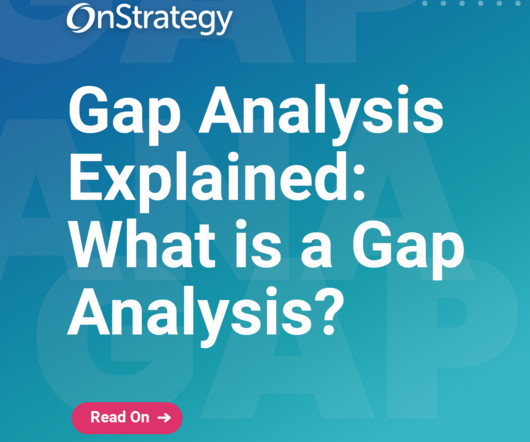Gap Analysis Explained: What is a Gap Analysis + Why Your Strategic Plan Needs One
OnStrategyHQ
DECEMBER 21, 2023
A gap analysis examines the key gaps in your organization’s current state – like capability , resources , or talent – that you need to overcome to achieve your desired future state. When to Use a Gap Analysis A gap analysis is best used when organizations seek to: Develop a strategy to achieve a vision of success.












Let's personalize your content